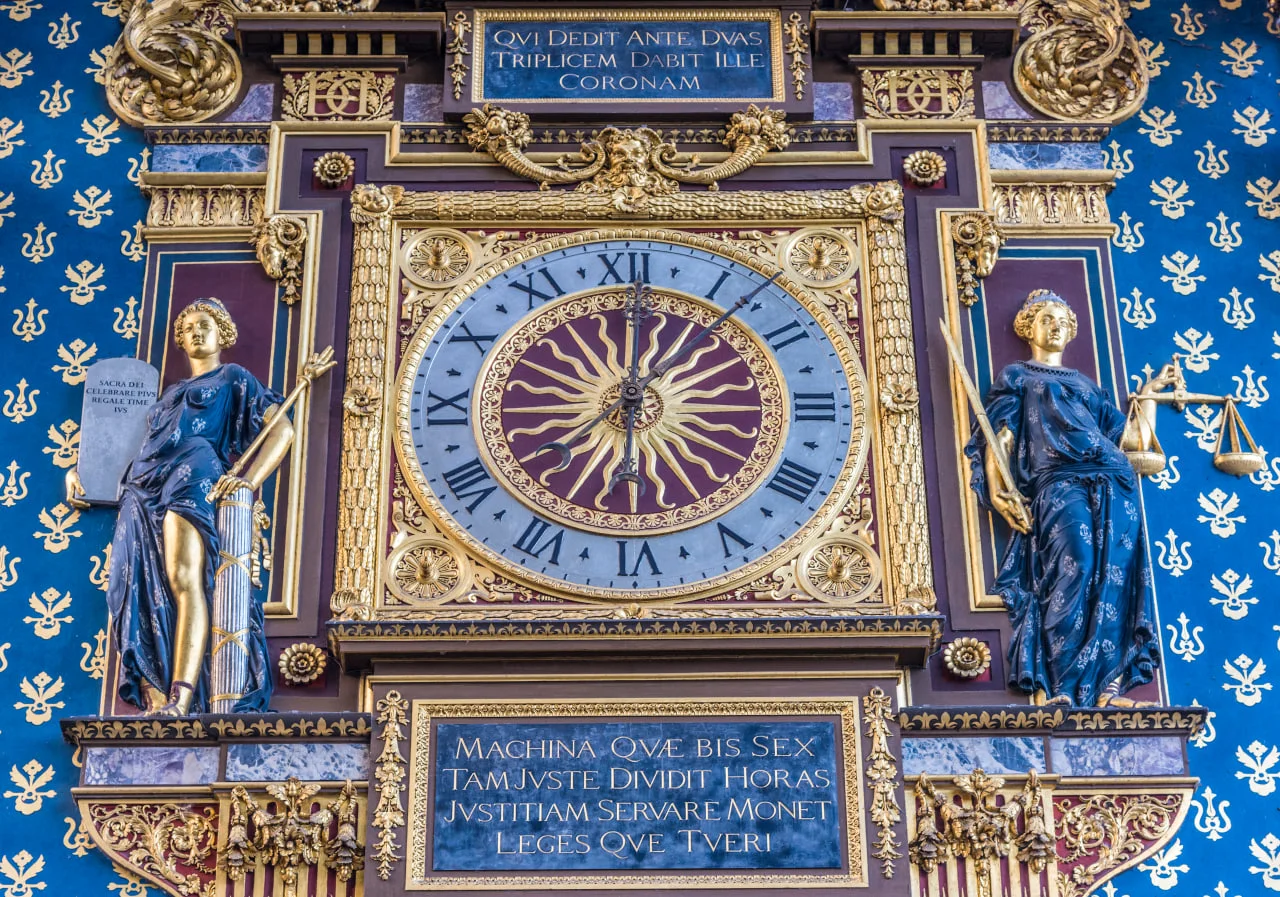Karl Marx considered free time the measure of humankind’s true wealth. Indeed, all of history can be seen as a fight for free time. We spend much less time than our ancestors did to obtain food or water and travel any distance, but we don’t really know if this free time truly benefits us. However, one thing humans certainly used their free time for was to create timepieces. Amongst the most elaborate creations of the human mind, these devices have allowed people to precisely measure and organize time, becoming essential for navigation, science, and daily life. Let’s dive into a short history of one of the most significant inventions in history.
The human ability to sense the passage of time developed much before their need to measure time precisely. For a long time, being able to tell the difference between night and day and winter and summer was enough. A continuous count, like the movement of a pendulum, or the regular cycle of light to dark and warm to cold was a reminder that one could stop time.
Never mind the hours and minutes! The relentless passage of time, like the gaping maw of Cronus,i

Pierre Mignard I: Time Clipping Cupid's Wings 1694/Denver Art Museum/Wikimedia Commons
THE TAMING OF TIME
Of the ancient timepieces such as sun clocks, clepsydras,i
During the late Middle Ages and Renaissance, scientists and engineers tried to control time and measure it precisely. They developed mechanisms that were moved with the aid of a free-falling weight and were wound up once a day or once a week, and these occasions would often be turned into performances. Clock towers, with their intricate designs, featured various symbolic images, like the rising and setting sun, and played music. These multistorey clock faces enchanted the public and were like attending the theater, cinema, or circus for the crowds.
Time was a collective and shared experience, and therefore set the rhythm of social life. One had to obey the hands of the clock as they governed daily activities. And it was not only people that adorned themselves with timepieces but cities as well, as clocks were raised high on the royal castles or on cathedral bell towers. The church oversaw these timepieces, and in turn, regulated the schedule of work and prayer, broadcasting the time to its flock from the bell towers.

Houses of Parliament and Big Ben/Getty Images
WHY WATCHES ARE SWISS
In the sixteenth century, Switzerland was as fortunate as the Huguenotsi

AT THE SERVICE OF MERCHANTS AND THE MILITARY
In the race for timekeeping precision, horology became a state matter and one of the main competitions among European states. Each country was trying to create the marine chronometer before anyone else because without knowing the exact time, it was impossible to find the exact location of a ship in the open sea. The marine chronometer allowed navigators to determine longitude by comparing Greenwich Mean Time and the local time at the ship’s location, calculated using celestial bodies. This breakthrough in timekeeping was essential for safe travel, and governments understood that the domination of world trade routes depended on this device.

A ship's chronometer, housed in a wooden case and mounted on a suspension designed to level out the effects of sea rolling, is part of the museum collection from the brand Glashutte Original / A. Tarkhanov
In 1714, the British Parliament promised a significant award to anyone who found a way to determine longitude in the absence of visible points of reference. The prize went to a British craftsman whose contribution to the British navy was no less than that of Admiral Nelson. In 1761, John Harrison (1693–1776) designed and built the marine chronometer. This Manhattan project of the eighteenth century is depicted in the modern series Longitude.
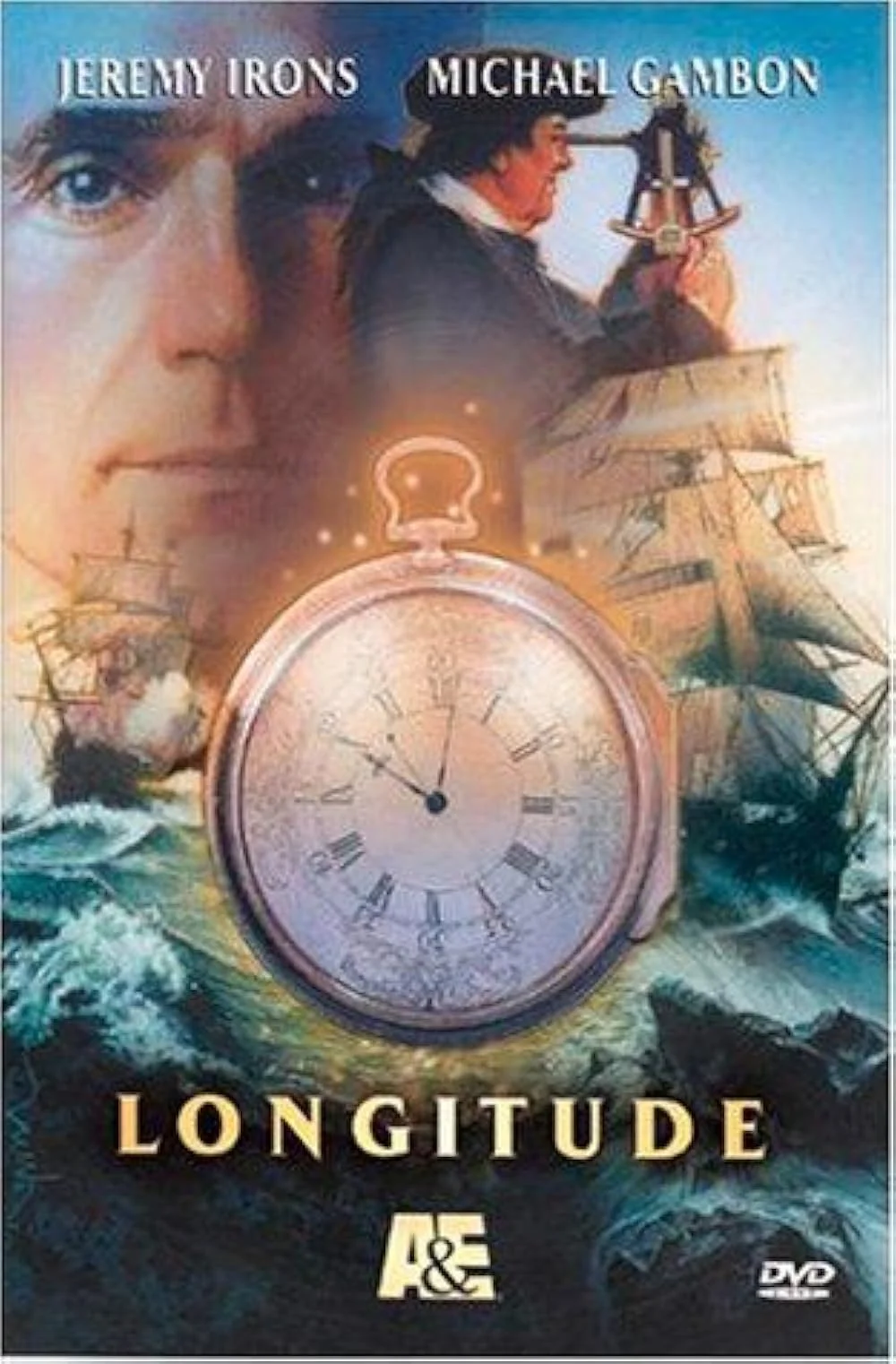
Poster of the series "Longitude"/from open access
Ever since then, French, British, and Swiss horologists have been supplying precise time to the militaries of the world. Step-counter watches determined the correct rhythm of the military formations, and artillery watches measured the distance to the enemy positions. Time became a powerful tool for generals and admirals, but it could defeat them just as quickly. One example of this is that during the Battle of Tsushima in the Korean Strait—the greatest naval defeat for the Russian navy in the Russo-Japanese war in 1905—marine chronometers made by the same Swiss maker Ulysse Nardin were present on both Russian and Japanese battleships. And yet, the outcome was disastrous only for the Russians. While the science of horology brought the enemies to one battlefield, it was the cannons that decided the result.
THE TIME OF BEAUTY AND TALENT
Apart from state projects, horologists were also driven by the mesmerizing desire to create the most beautiful and complex mechanisms in the world. The Swiss horologist Pierre Jaquet-Droz (1721–90) was famous for his automatas, mechanical androids that worked with gear wheels that could mimic human actions like playing music or writing. He traveled the world with these inventions and visited the courts of almost every European and Asian monarch, astonishing them with the talents of his mechanical pets.

Presentation of Jaquet-Droz automata at the court of Louis XV/Alamy
Three of the most famous automatas he built are in a museum in Neuchâtel. These extraordinary creations are the Draughtsman, who sketches the portrait of Louis XV and Tutu the dog (sometimes scandalously confusing one with the other); the Writer, who can write entire phrases; and the Musician, who plays the harpsichord while breathing loudly аnd freely.
Jaquet-Droz traded with China, and his automata were prized by the emperors of the last Qing dynasty. He sold them mechanical singing birds that were driven by intricate clockwork. It’s not for nothing that Hans Christian Andersen’s fairy tale ‘The Nightingale’ about a competition between a mechanical and real nightingale starts with the words, ‘The emperor of China is a Chinaman, as you most likely know, and everyone around him is a Chinaman too.’

The Jaquet Droz Singing Bird, with a pre-auction estimate of between 1.88 Million and 2.63 million Hong Kong Dollars, in Hong Kong, South China/Xinhua/Song Zhenping/Alamy
Around the same time, another legendary horologist, Abraham-Louis Breguet (1747–1823), was active during various regimes in France, including the reigns of Louises, before and after restoration, Napoleon, and the post-Napoleonic era under Alexander I. Breguet, or rather his entire family, created the most complex and expensive timepieces of the time, including the famous Marie-Antoinette watch, known for its craftsmanship and design.
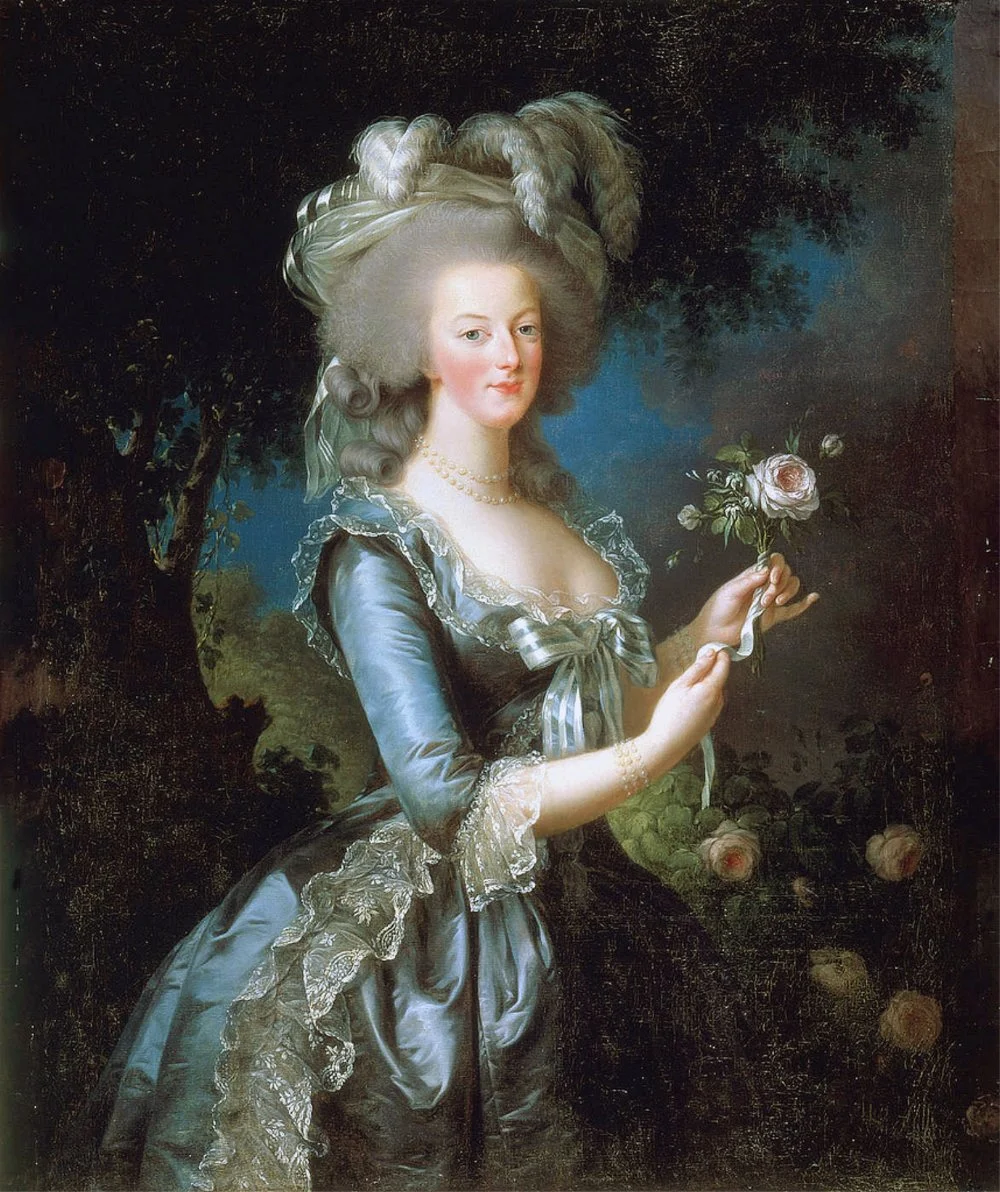
Marie Antoinette à la Rose', 1783. Vigée-Lebrun, Marie Louise Elisabeth (1755-1842). Found in the collection of the Musée National du Château de Versailles et du Trianon/Getty Images
Intended as a gift for the young queen Marie Antoinette, the watch had to combine all of the horological complexities known at that time: a full calendar, equation of time,i

A young aristocrat and officer of the French Guards explained the queen’s commission to Breguet: ‘You may take as much time as you wish, and you will receive any price you ask for.’ Unfortunately, Marie Antoinette was never able to enjoy the timepiece. When she was being beheaded on 16 October 1793, the piece was still on Breguet’s table. He had worked on it for almost half a century, until his death, but still never finished it. It was finally completed by Breguet’s son Louis-Antoine.
The Swiss, with their love of counting, say that the Marie-Antoinette piece was completed thirty-four years after her death, forty-four years after the commission was made, and four years after the death of the horologist who started it. The journey of the famous timepiece does not end there—it disappeared, surfaced in private collections, was stolen from museums, and found again. Finally, the modern brand Breguet began to make the legendary timepiece again.
Even today, the interest in ultra-complex and super expensive watches remains strong. On 11 November 2014, a Patek Philippe pocket watch made in 1932 was sold at a Sotheby's auction in Geneva for 24 million dollars. This watch was commissioned by banker Henry Graves Jr, a well-known collector of watches and paintings and the owner of his own island. He commissioned the famous Genovese brand to make the most complex watch in the world just to spite his friend James Packard. At that time, the rich were trying to outdo each other with watches as they now do with yachts. The work on the secret commission continued for five years, and the massive golden onion arrived in America only in 1933.
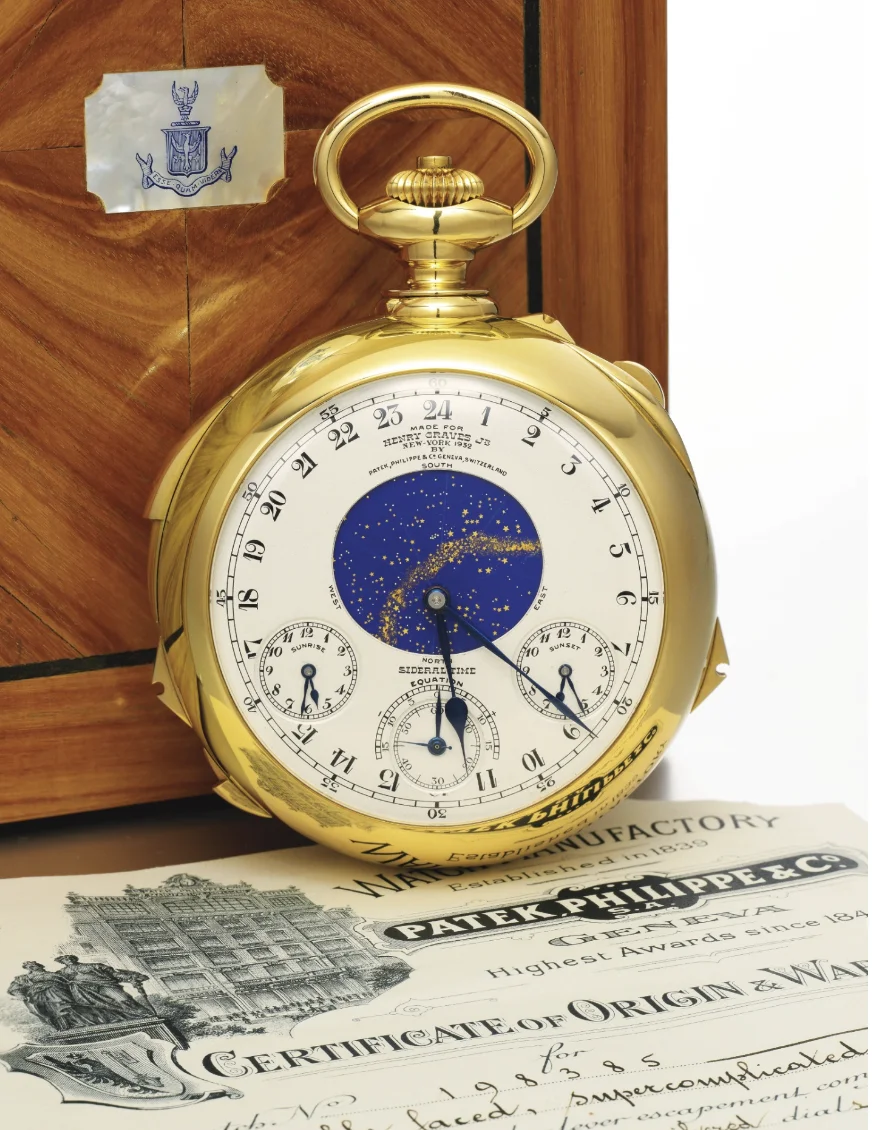
The highly sophisticated Henry Graves Jr. watch, custom-made by Patek Philippe in 1932, sold for $24 million at the Sotheby's auction in Geneva on November 11, 2014/Sotheby's
Graves did beat his opponent; the Henry Graves Super Complication watch turned out to be the most complicated timepiece in existence until recently, when its record was broken by contemporary magnate William Berkley. On his commission, another equally famous Genovese brand made an astonishing watch, the Berkley Grand Complication, which weighed almost a kilogram.
The Swiss approach to horology allowed Swiss watchmakers to act as timekeepers of other nations and be spectators to world history. During the Second World War, Swiss watches were worn by the pilots of all the armies involved in the conflict. Later, Swiss watches conquered space on the wrists of astronauts and measured the time for all events in the Olympic games, cementing their position as symbols of accuracy and excellence.
Even in 1969, when the first Japanese quartz watches entered the market, the Swiss remained unshaken. They shifted their focus to the high art of watchmaking, having made it clear to the world that they were paying not for the privilege of knowing what the time was but for the creation of an artist. Today, while phones, fridges, and microwaves can tell you the time, timekeeping has transformed from a fierce, almost divine influence into a mundane way to manage deadlines.
Across the ages, horologists' beautiful creations have brought back a sense of the sacred and cosmic nature of time, and it has been done with nostalgia and tenderness. If timepieces do still evoke the fear of death, they do it with a sense of humor, like the Time-Eater, a timepiece created last year by Konstantin Chaykin in collaboration with Louis Erard. This watch is a whole different monster, sweet and hand-reared, or should we say wrist-reared, honoring a mythological creature from Russian folklore and offering a playful interpretation of our relationship with time.

Le Régulateur Louis Erard x Konstantin Chaykin. "I was reminded of "Saturn Devouring his Son" by Francisco Goya. I was thinking about the Langoliers, the “time eaters" from Stephen King's novella. This is how the idea of a "mouth"-a second indicator was born: movable "teeth" perform a continuous cyclic rotation, as if devouring time," says Konstantin Chaykin
HOW THE BEST WATCHES WORK
Even today, centuries after their invention, Peter Henlein’s spring and Christiaan Huygens’ spiral remain the fundamental elements of timepiece mechanisms, which consist of several functional blocks. The spring, which is compressed by the wind-up key, stores energy inside the drum of the watch, which powers the timekeeping function. In 1861, Jean Adrien Philippe made a significant advancement and replaced the traditional key with a crown.
In watches wound by hand, the energy is spent as the watch operates, requiring regular winding. In self-winding watches, the movement of a special rotor, which is caused by the movement of the wearer’s wrist, continuously winds up the spring. This mechanism, used in Breguet’s time and patented in 1924 by John Harwood, now has many variations. The balance wheel, which regulates the timekeeping, can be designed in many ways. It can be sectoral, can hide in the mechanism if the latter needs to be thin, be positioned along the circumference, or move in a linear fashion like a weight on medical scales—it all depends on the design and esthetics of the watch.
The drum passes the energy on to the main wheel. It would spin freely but the balance wheel slows it down. The movements of the Huygens’ spring release the energy in small portions that are counted by the anchor, allowing the system of the wheel gears to rotate to the distance that equals one second on the watch face.
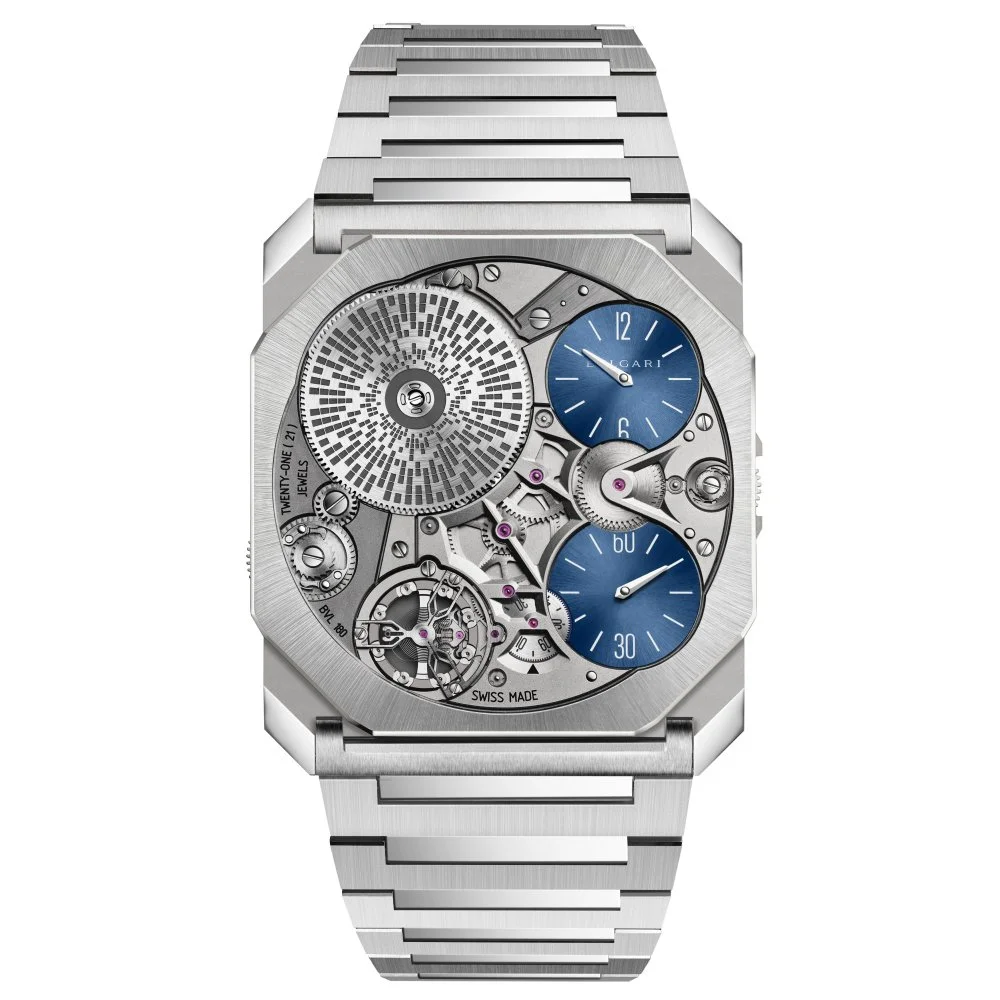
The unique feature of the Bvlgari Octo Finissimo Ultra Platinum ultra-thin watch (with a record-breaking thickness of 1.8 mm) is that its entire mechanism is arranged in a single layer, similar to the palm of a hand. You can see the drum with a spring at the top left and the escapement node at the bottom left in this photo. The transmission wheel system is also visible/Photo:GPHG
The wheels of hours and minutes are connected to the escape wheel, and their number depends on the number of hands the watch has and whether they are moving in hourly or minute rhythm.
This is the standard mechanism in which complications can be added in the shape of additionally layered on modules or pre-built functions.
Chronographs, which are designed to measure and record periods of time, in their most perfect version are considered the main or the ‘great’ complication. For example, the split-second chronograph, which has two seconds hands one under the other, allows one to measure two time spans; the flyback chronograph has a function that allows one to reset and restart the seconds hand.
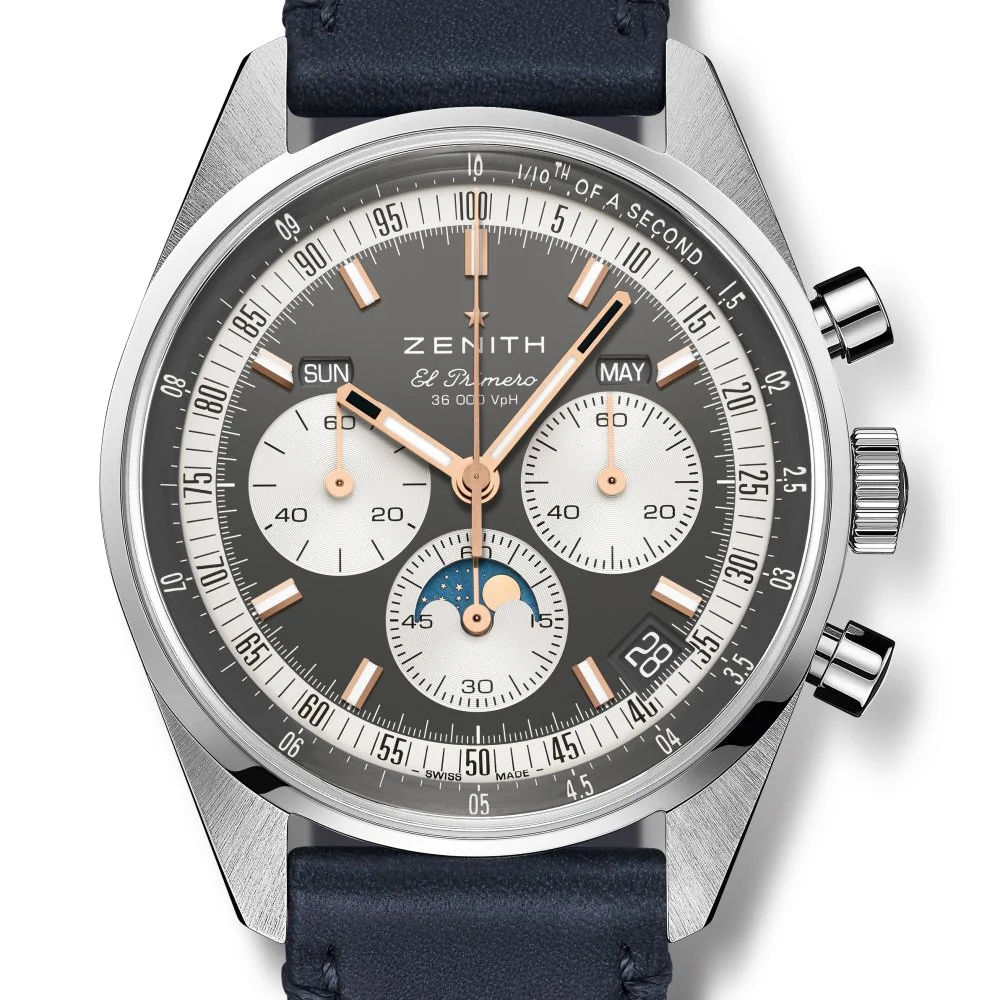
Zenith Chronomaster Original Triple Calendar is a classic three-button chronograph, thanks to the famous El Primero movement of the twentieth century. This movement can count down to 1/10 of a second. On the upper button, you can start and stop the large seconds hand. The lower button returns it to zero. There are also summed counters, a date window, and a moon phase indicator on the dial/Photo: Archive of the press service.
Additionally, the chronograph case usually has two buttons, one for starting and stopping the counting of time and another for resetting and returning the seconds hand into the home position of 12 o’clock. Many brands also use the single button chronograph, which is now making a comeback.
A tourbillon is a special advanced module to the mechanics of a watch escapement to increase accuracy by compensating for effects of the Earth's gravity. It was originally designed by Breguet for pocket watches, and it ensures that they function as well in a vertical position as they do in a horizontal one.
In wristwatches where the position of the watch constantly changes, the tourbillon has become more of a decoration, unless, of course, it’s a tourbillon with several axes. These are built on the principle of a gyroscope and are designed to maintain the orientation of the anchor mechanism regardless of the position of the wrist.
Today, there are also watches that contain a GMT module featuring an additional hand to track a second time zone. Some advanced models even include a world time function, which displays several time zones simultaneously.
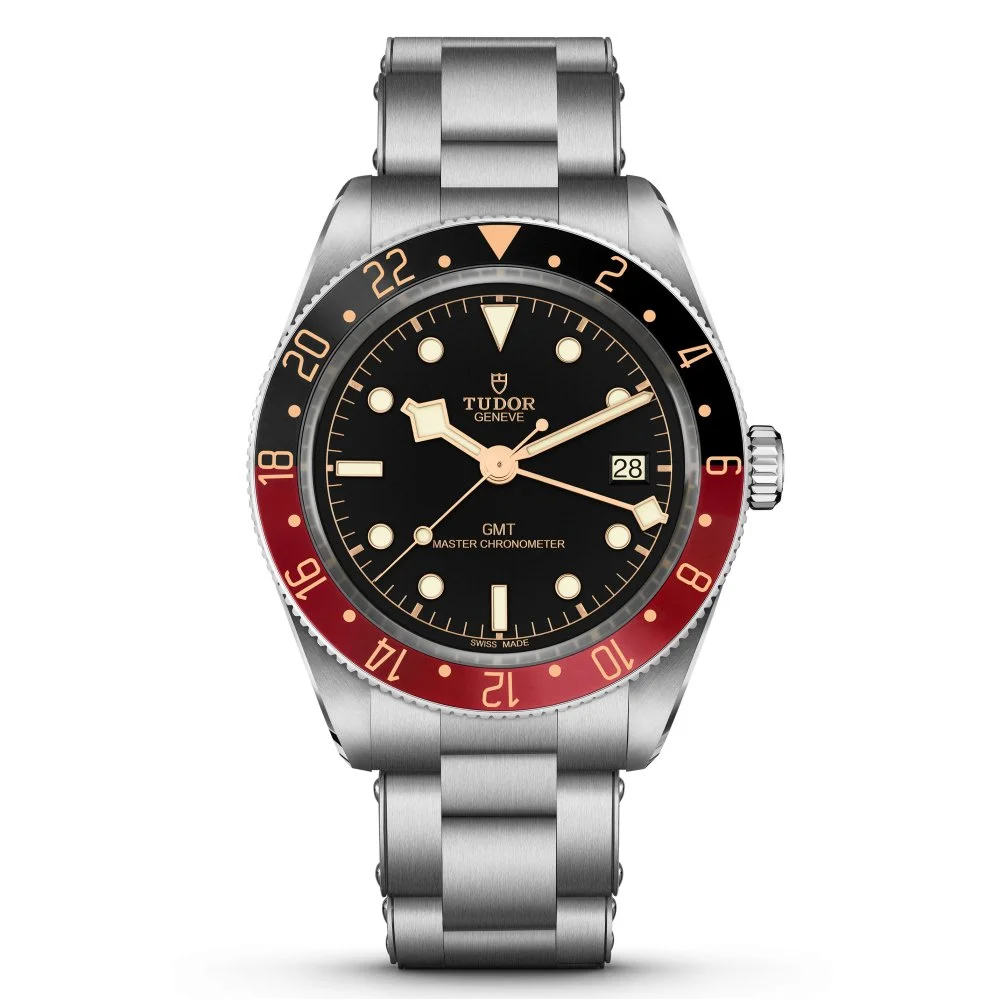
The long hand on the Tudor Black Bay 58 GST dial indicates the time in a second time zone that you can choose to compare with the main hour hand/Photo: archive of the press service
Watch engineers have adapted timepieces to not only count hours and minutes but to track the days and years well. Thus, calendars are amongst the most intricate and rare watch complications. The most precise ones are able to switch from the thirtieth to the thirty-first of the month when required and tell the difference between a leap year and standard years without needing the user’s intervention. Some of the most advanced watches are designed to maintain accuracy for tens, and sometimes hundreds, of years.
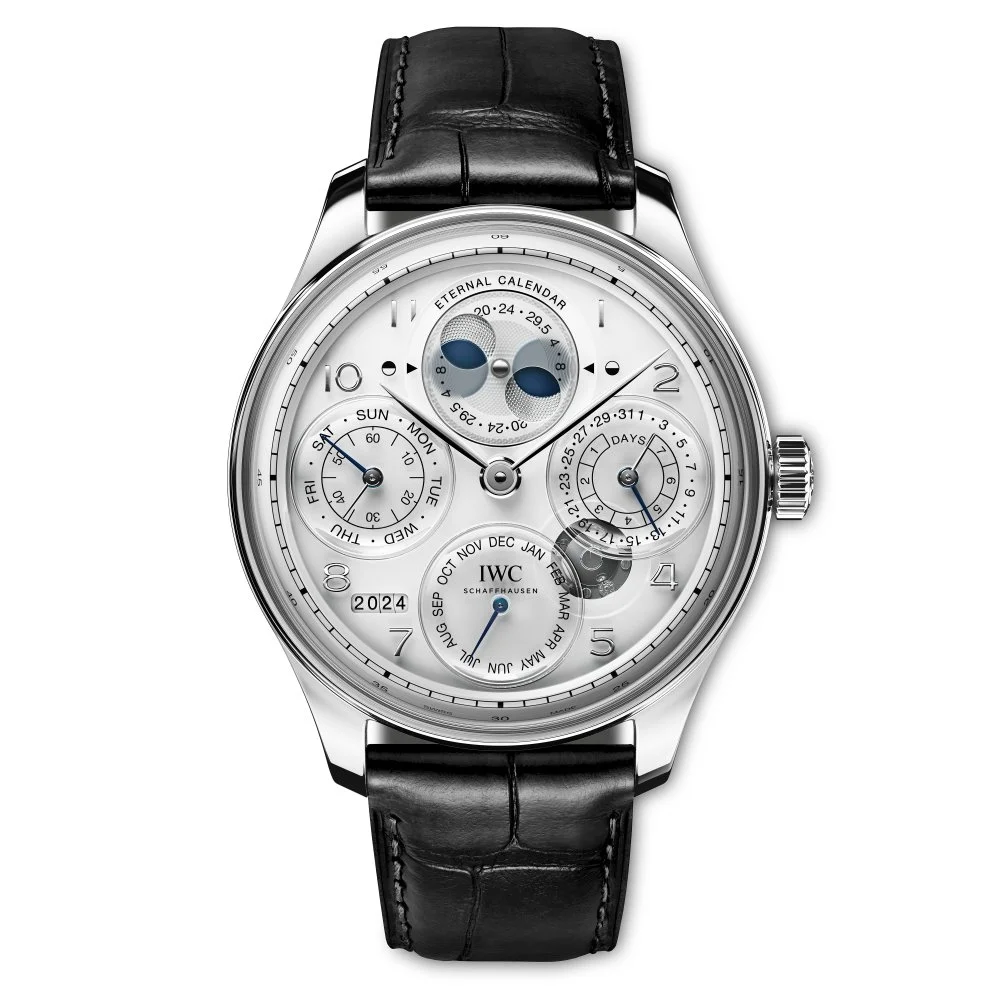
The IWC Schaffhausen brand has launched the Portugieser Eternal Calendar, which is the most accurate perpetual calendar currently available. It takes into account the difference in the number of days in months and leap years, ensuring that it will keep accurate time until at least the year 3999/Photo: archive of the press service
In addition, calendars in watches are often equipped with lunar phases indicators, and some rare models even display the movements of other planets of the solar system. Astronomical watches thus play the role of wrist planetariums.
The ‘queen’ or pinnacle of all watch complications, however, is the minute repeater. Watches with repeaters chime the time, just like the clocks on bell towers used to in the past. Designed to tell the time in the dark, chiming timepieces have become expensive toys. Some models chime every quarter of an hour or every hour, and you will also find minute repeaters chiming different sounds every hour, then every quarter of the hour and every minute. To tell the time by ear, though, one needs to get into the habit.
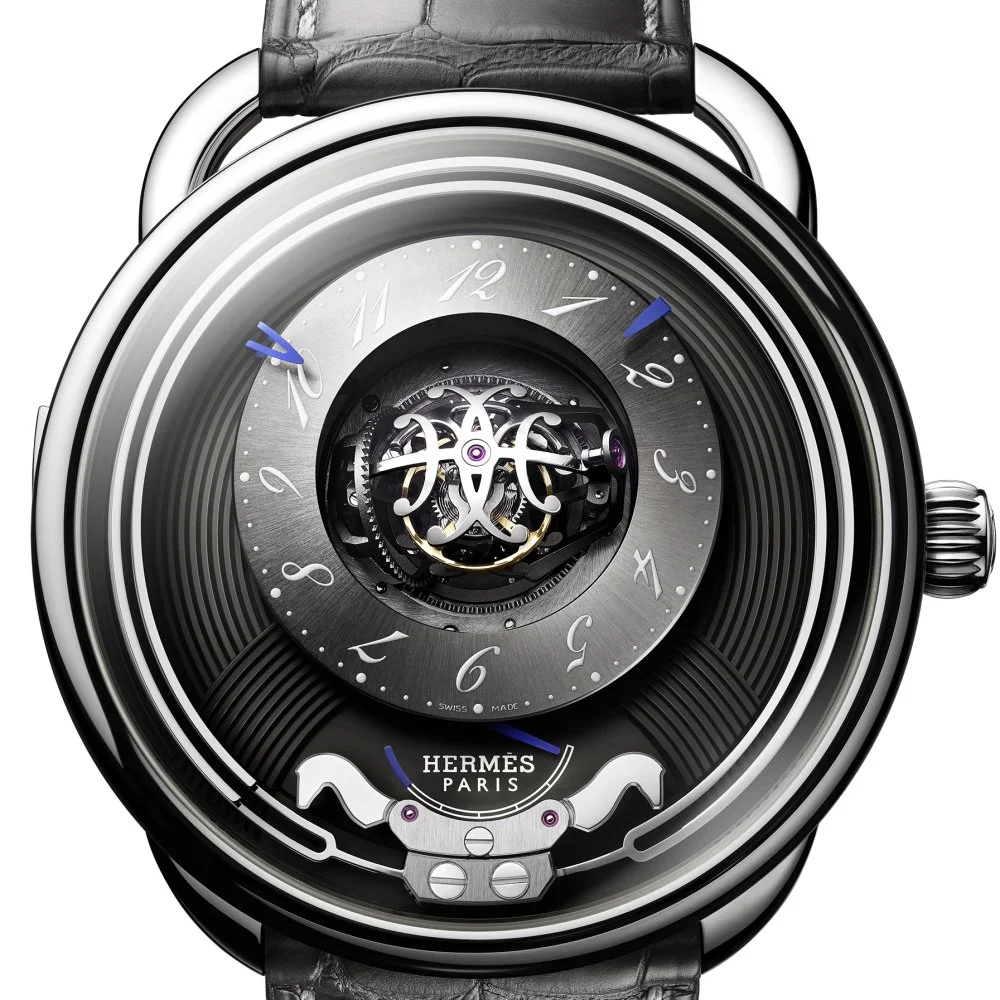
The Hermès striking clock counts down the time by striking a gong with small hammers that are shaped like skates. Near the center, there is a rotating tourbillon that moves along several axes. This is an example of how watchmakers combine different complications into one model/Photo: archive of the press service
